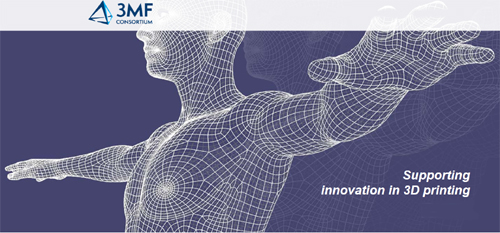
Latest News
May 11, 2015
It wasn’t all that long ago that the news about 3MF Consortium first broke. Basic details of what companies are involved and the motivations behind the consortium can be found in a post written by Kenneth Wong. For the link shy, I’ll provide a quick summary.
Microsoft, Autodesk and a number of other major players got together to design a new file format for additive manufacturing (AM). The new format, named 3MF, is meant to be a step forward from the venerable STL format that is used by the majority of 3D printers. Something similar was attempted by ASTM with the AMF format, but it never really gained much traction.

In this case, with nearly every important CAD company and a number of AM manufacturers on board, it seems likely that 3MF will become the format of the future. So what is the big deal about 3MF and what was wrong with STL?
STL was first introduced over a quarter of a century ago in 1989. Twenty five years is a long time for a piece of code to hang around, even if it gets updated on a regular basis. Consider the vast difference in computer architecture and programming when comparing current technology to the computers available in 1989. It seems unlikely STL is able to fully take advantage of improvements that have occurred in the last 26 years.
3MF is XML-based, includes definitions for AM, and offers third-party extensibility for custom data. The new format has been designed from day one to act as an AM format, and it remains capable of reading older formats. 3MF offers a single archive that contains model information, mesh, textures, colors and materials. Even better, from the point of view of users, the new format accomplishes all these things while remaining open source.
“The 3MF specification will empower people, maximize productivity, and unlock the full capabilities of 3D printing,” said Adrian Lannin, executive director, 3MF Consortium. “3MF will align CAD software and 3D printing hardware and software in a more information-rich file format, specifically designed to support the needs of modern 3D printing throughout the entire printing process. I look forward to the collaboration between the members as we work to accomplish this important goal.”
Below you’ll find a short video that discusses the STL file format.
Source: 3MF
Subscribe to our FREE magazine, FREE email newsletters or both!
Latest News
About the Author
John NewmanJohn Newman is a Digital Engineering contributor who focuses on 3D printing. Contact him via [email protected] and read his posts on Rapid Ready Technology.
Follow DE





